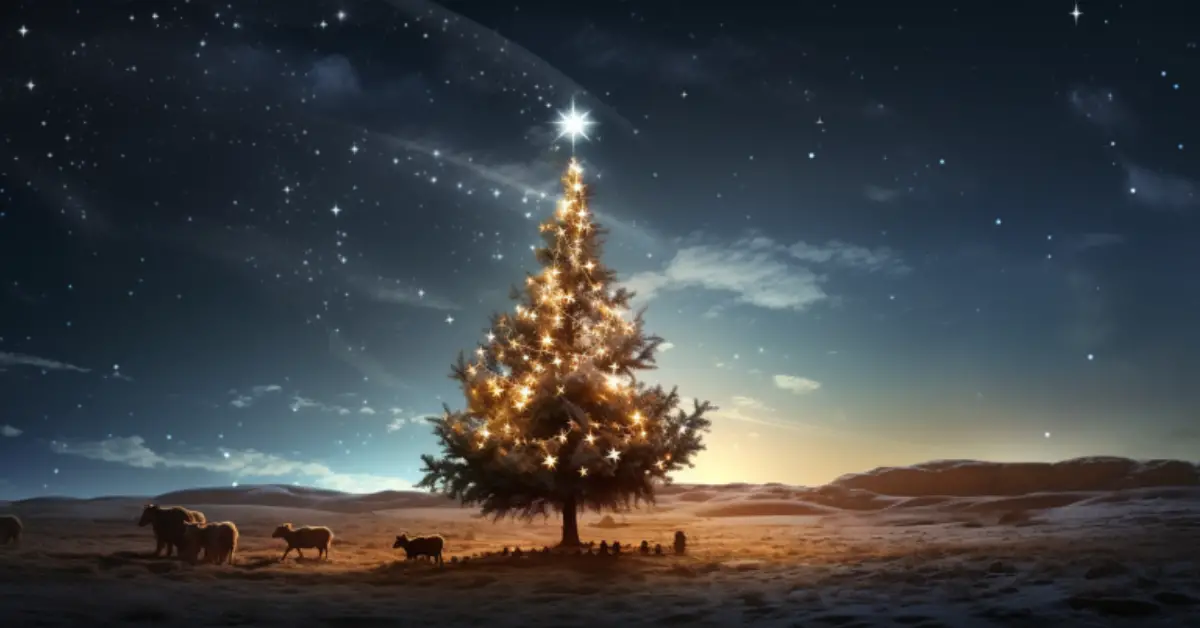Wondering if Christmas trees have a place in Christian tradition? The Bible doesn’t explicitly mention Christmas trees, as they are a later tradition developed around the 16th century. However, there are verses that mention trees and greenery, often symbolizing life and prosperity. Jeremiah 10:2-4 is sometimes pointed to, discussing the customs of “the peoples,” including cutting down and adorning trees. It’s important to understand that the Bible guides us to focus on the birth of Jesus during Christmas and to celebrate His love, rather than fixating on the decor.
To delve deeper into what the Bible says about this tradition and explore more contextual meanings behind the scriptures, keep reading!
What Does the Bible Say About Christmas Trees?
Now, delving deeper, it’s fascinating to explore the various perspectives within Christianity on this topic.
While the Bible doesn’t directly reference Christmas trees, interpretations and reflections upon the symbolism of trees within the text offer insight. Trees throughout the Bible often symbolize life, growth, and connectivity to God.
The idea of decorating trees finds its roots in cultural traditions. The act of adorning trees has evolved as a way to celebrate Christmas, focusing on joy and the festive spirit.
Some Christians might avoid Christmas trees, reflecting on Jeremiah 10:2-4, where it says, “Do not learn the ways of the nations…For the practices of the peoples are worthless; they cut a tree out of the forest…They adorn it with silver and gold.” However, many scholars believe this verse does not refer to Christmas trees but rather to the idolatry and worship of false gods.
It’s crucial to remember the essence of Christmas, according to the New Testament, is to honor the birth of Jesus, God’s love made manifest. Christmas is a time to reflect on the grace and love of Jesus and to share these blessings with others.
Having a Christmas tree is generally considered a matter of personal conviction. If the tree becomes an object of worship or distracts from the true meaning of Christmas, it might be worth reconsidering its place in your celebration.
However, it’s widely accepted that Christmas trees can be a beautiful part of the celebration, allowing families to gather and share in the joy of the season, without conflicting with the Christian faith.
The real focus should be on the spiritual significance of Christmas and the celebration of the birth of Jesus, ensuring our practices align with God’s view and intentions for the holiday.
Bible Verses About Christmas Trees
While there aren’t direct references to Christmas trees, the Bible is rich with verses discussing trees and their symbolism. Here’s an exploration of a few:
- Jeremiah 10:2-4 As mentioned, it warns against adopting heathen practices, including adorning trees. Yet, the interpretation is crucial; the context is idolatry, not the celebration of Jesus’ birth.
- Isaiah 60:13 “The glory of Lebanon will come to you, the juniper, the fir and the cypress together, to adorn my sanctuary; and I will glorify the place for my feet.” This verse speaks to the beauty and reverence of trees in God’s sanctuary.
- Psalm 1:3 “He is like a tree planted by streams of water, which yields its fruit in season and whose leaf does not wither. Whatever he does prospers.” This reflects the symbolism of trees representing a strong, prosperous life rooted in faith.
- Revelation 22:2 “On each side of the river stood the tree of life, bearing twelve crops of fruit, yielding its fruit every month. And the leaves of the tree are for the healing of the nations.” Here, the tree of life symbolizes eternal life and healing through Jesus.
- Proverbs 11:30 “The fruit of the righteous is a tree of life, and the one who is wise saves lives.” Again, we see the tree as a symbol of life and wisdom, aligning with righteous living.
Considering these verses, it’s clear that trees hold significant symbolic value in the Bible, often relating to life, growth, and God’s creation. The use of trees as part of Christmas celebrations can be seen as a reflection of these symbols, allowing Christians to incorporate elements of God’s creation in their acknowledgment and celebration of the birth of Jesus.


